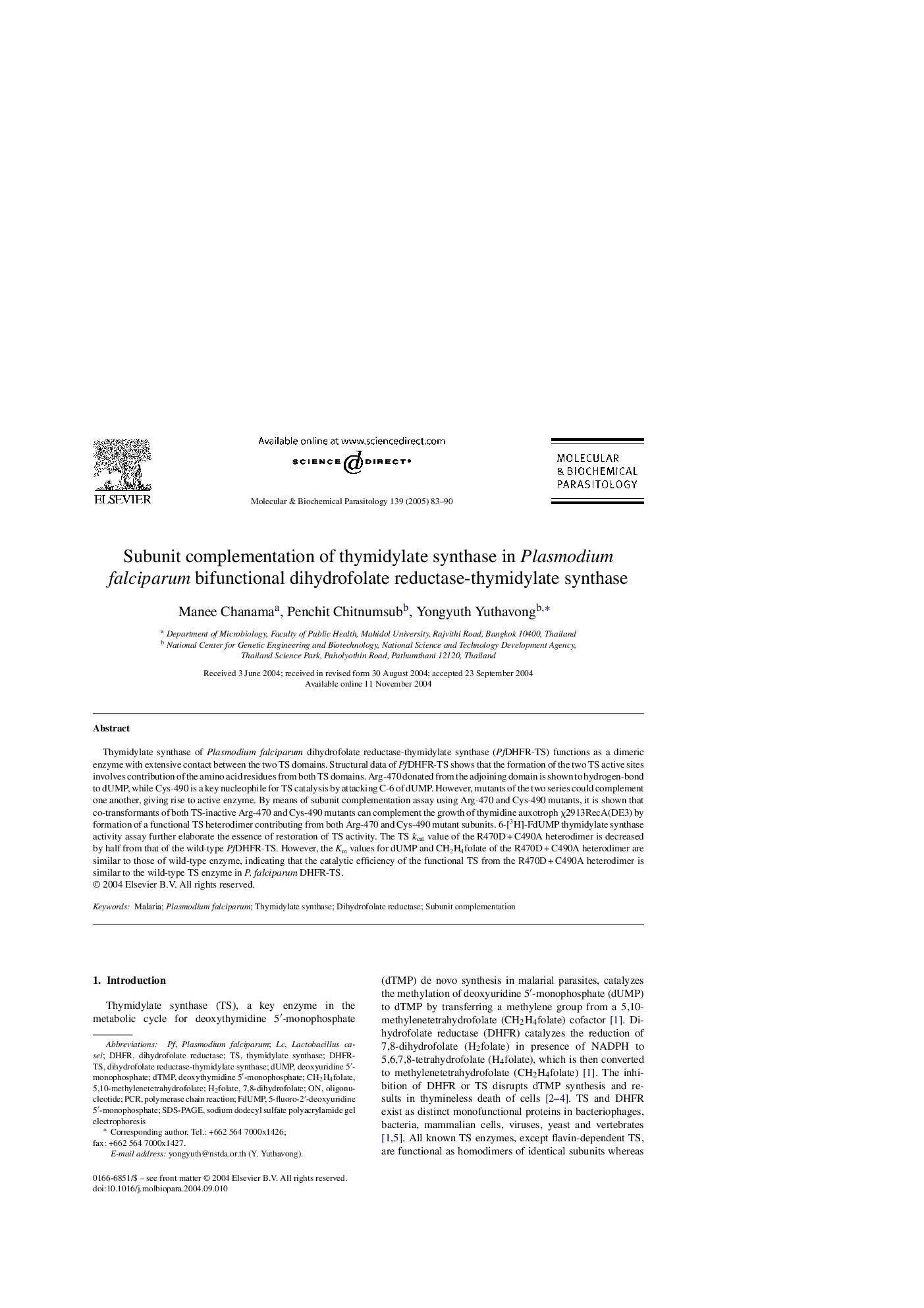| Article ID | Journal | Published Year | Pages | File Type |
|---|---|---|---|---|
| 9140163 | Molecular and Biochemical Parasitology | 2005 | 8 Pages |
Abstract
Thymidylate synthase of Plasmodium falciparum dihydrofolate reductase-thymidylate synthase (PfDHFR-TS) functions as a dimeric enzyme with extensive contact between the two TS domains. Structural data of PfDHFR-TS shows that the formation of the two TS active sites involves contribution of the amino acid residues from both TS domains. Arg-470 donated from the adjoining domain is shown to hydrogen-bond to dUMP, while Cys-490 is a key nucleophile for TS catalysis by attacking C-6 of dUMP. However, mutants of the two series could complement one another, giving rise to active enzyme. By means of subunit complementation assay using Arg-470 and Cys-490 mutants, it is shown that co-transformants of both TS-inactive Arg-470 and Cys-490 mutants can complement the growth of thymidine auxotroph Ï2913RecA(DE3) by formation of a functional TS heterodimer contributing from both Arg-470 and Cys-490 mutant subunits. 6-[3H]-FdUMP thymidylate synthase activity assay further elaborate the essence of restoration of TS activity. The TS kcat value of the R470DÂ +Â C490A heterodimer is decreased by half from that of the wild-type PfDHFR-TS. However, the Km values for dUMP and CH2H4folate of the R470DÂ +Â C490A heterodimer are similar to those of wild-type enzyme, indicating that the catalytic efficiency of the functional TS from the R470DÂ +Â C490A heterodimer is similar to the wild-type TS enzyme in P. falciparum DHFR-TS.
Keywords
H2folateDeoxythymidine 5′-monophosphateDTMPLactobacillus caseiFdUMPDHFR-TSdihydrofolate reductase-thymidylate synthase5,10-Methylenetetrahydrofolate7,8-dihydrofolatedhfrSDS-PAGESodium dodecyl sulfate polyacrylamide gel electrophoresisOligonucleotidedihydrofolate reductasedUMPthymidylate synthaseMalariapolymerase chain reactionPCRPlasmodium falciparum
Related Topics
Life Sciences
Biochemistry, Genetics and Molecular Biology
Molecular Biology
Authors
Manee Chanama, Penchit Chitnumsub, Yongyuth Yuthavong,
